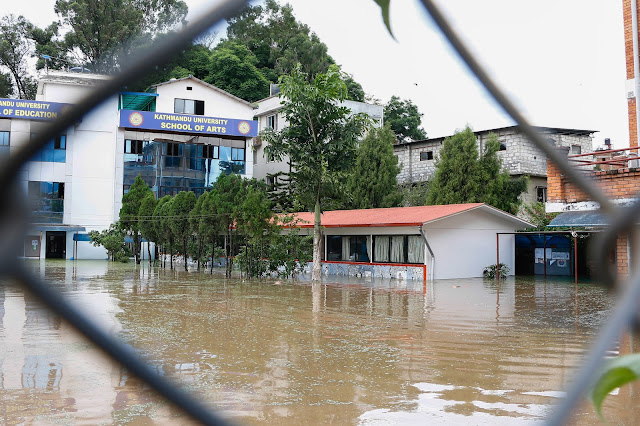Boudhanath and Swayambhunath
Boudhanath (Devanagari, Nepali: बौद्धनाथ) (also called Boudha, Bauddhanāth or Bauddhanath or the Khāsa Caitya) is a stupa in Kathmandu, Nepal. It is known as Khāsti in Nepal Bhasa, Jyarung Khashor in Tibetan language (Tibetan: བྱ་རུང་ཁ་ཤོར། Wylie: bya rung kha shor) or as Bauddha by speakers of Nepali.[2] Located about 11 km (6.8 mi) from the center and northeastern outskirts of Kathmandu, the stupa's massive mandalamakes it one of the largest spherical stupas in Nepal.
Swayambhu (Devanagari: स्वयम्भू स्तूप; Newari: स्वयंभू; sometimes Swoyambhu) is an ancient religious architecture atop a hill in the Kathmandu Valley, west of Kathmandu city. The Tibetan name for the site means 'Sublime Trees' (Wylie: Phags.pa Shing.kun), for the many varieties of trees found on the hill. However, Shing.kun may be a corruption of the local Nepal Bhasa name for the complex, Singgu, meaning 'self-sprung'.[1] For the Buddhist Newars in whose mythological history and origin myth as well as day-to-day religious practice, Swayambhu occupies a central position, it is probably the most sacred among Buddhist pilgrimage sites. For Tibetans and followers of Tibetan Buddhism, it is second only to Boudha.




Comments
Post a Comment